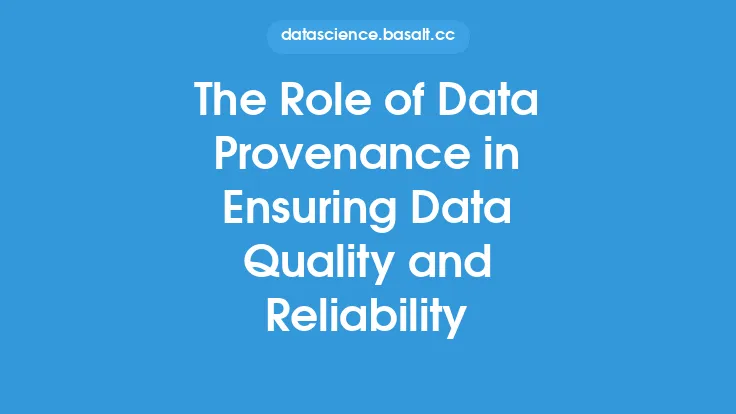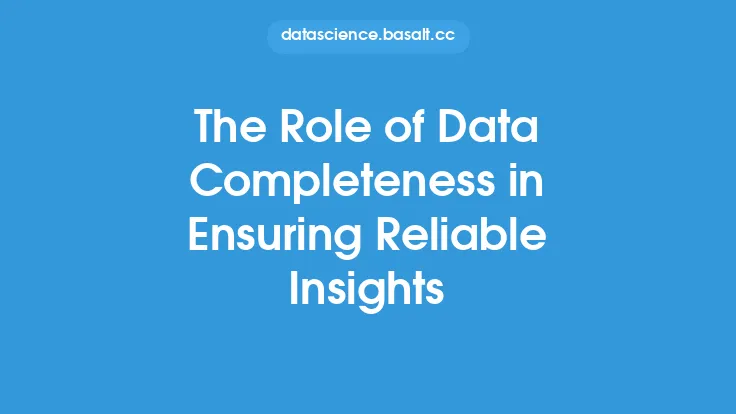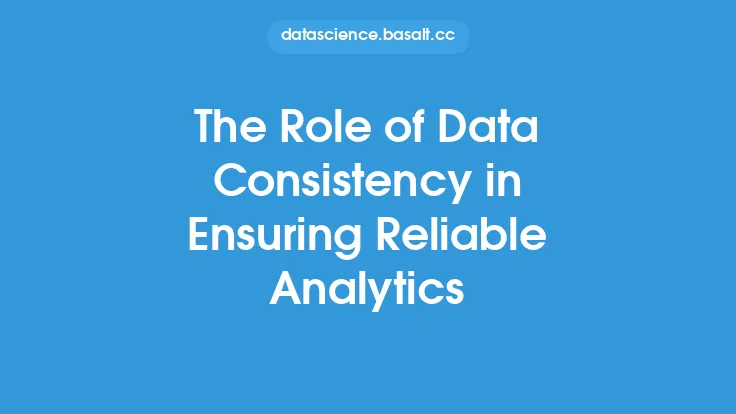Data preparation is a crucial step in the data analysis process, as it directly impacts the quality of the data and the accuracy of the insights derived from it. The primary goal of data preparation is to ensure that the data is accurate, complete, and consistent, which is essential for making informed decisions. In this article, we will delve into the role of data preparation in ensuring data quality and explore the various techniques and methods used to achieve this goal.
Introduction to Data Quality
Data quality refers to the accuracy, completeness, and consistency of the data. High-quality data is essential for making informed decisions, as it provides a reliable foundation for analysis and insights. Poor data quality, on the other hand, can lead to incorrect conclusions, flawed decision-making, and ultimately, business losses. Data preparation plays a critical role in ensuring data quality by identifying and addressing data errors, inconsistencies, and inaccuracies.
Data Preparation Techniques for Ensuring Data Quality
There are several data preparation techniques used to ensure data quality, including data cleaning, data transformation, and data validation. Data cleaning involves identifying and correcting errors in the data, such as missing or duplicate values, and ensuring that the data is consistent and accurate. Data transformation involves converting the data into a suitable format for analysis, such as aggregating data or converting data types. Data validation involves checking the data against a set of rules or constraints to ensure that it is accurate and consistent.
Data Profiling and Data Quality Metrics
Data profiling is the process of analyzing the data to understand its distribution, patterns, and relationships. This involves calculating data quality metrics, such as data completeness, data accuracy, and data consistency. Data completeness refers to the percentage of missing values in the data, while data accuracy refers to the percentage of correct values. Data consistency refers to the degree to which the data conforms to a set of rules or constraints. These metrics provide a quantitative measure of data quality and help identify areas for improvement.
Handling Missing Values and Outliers
Missing values and outliers are common data quality issues that can significantly impact the accuracy of the analysis. There are several techniques for handling missing values, including imputation, interpolation, and deletion. Imputation involves replacing missing values with estimated values, while interpolation involves estimating missing values based on neighboring values. Deletion involves removing rows or columns with missing values. Outliers, on the other hand, can be handled using techniques such as winsorization, which involves replacing extreme values with a specified value.
Data Standardization and Normalization
Data standardization and normalization are essential steps in data preparation. Standardization involves converting the data into a standard format, such as converting date fields to a uniform format. Normalization involves scaling the data to a common range, such as converting numeric values to a range between 0 and 1. This helps prevent features with large ranges from dominating the analysis and improves the accuracy of the models.
Data Governance and Data Quality Control
Data governance and data quality control are critical components of data preparation. Data governance involves establishing policies and procedures for managing data quality, while data quality control involves monitoring and maintaining data quality over time. This includes implementing data validation rules, data quality metrics, and data profiling to ensure that the data remains accurate, complete, and consistent.
Best Practices for Data Preparation
There are several best practices for data preparation that can help ensure data quality. These include documenting data sources and metadata, using data validation rules and data quality metrics, and implementing data governance and data quality control procedures. Additionally, using data preparation tools and techniques, such as data profiling and data transformation, can help automate the data preparation process and improve data quality.
Conclusion
In conclusion, data preparation plays a critical role in ensuring data quality, which is essential for making informed decisions. By using data preparation techniques, such as data cleaning, data transformation, and data validation, and implementing data governance and data quality control procedures, organizations can ensure that their data is accurate, complete, and consistent. By following best practices for data preparation and using data preparation tools and techniques, organizations can improve the quality of their data and make better decisions.





